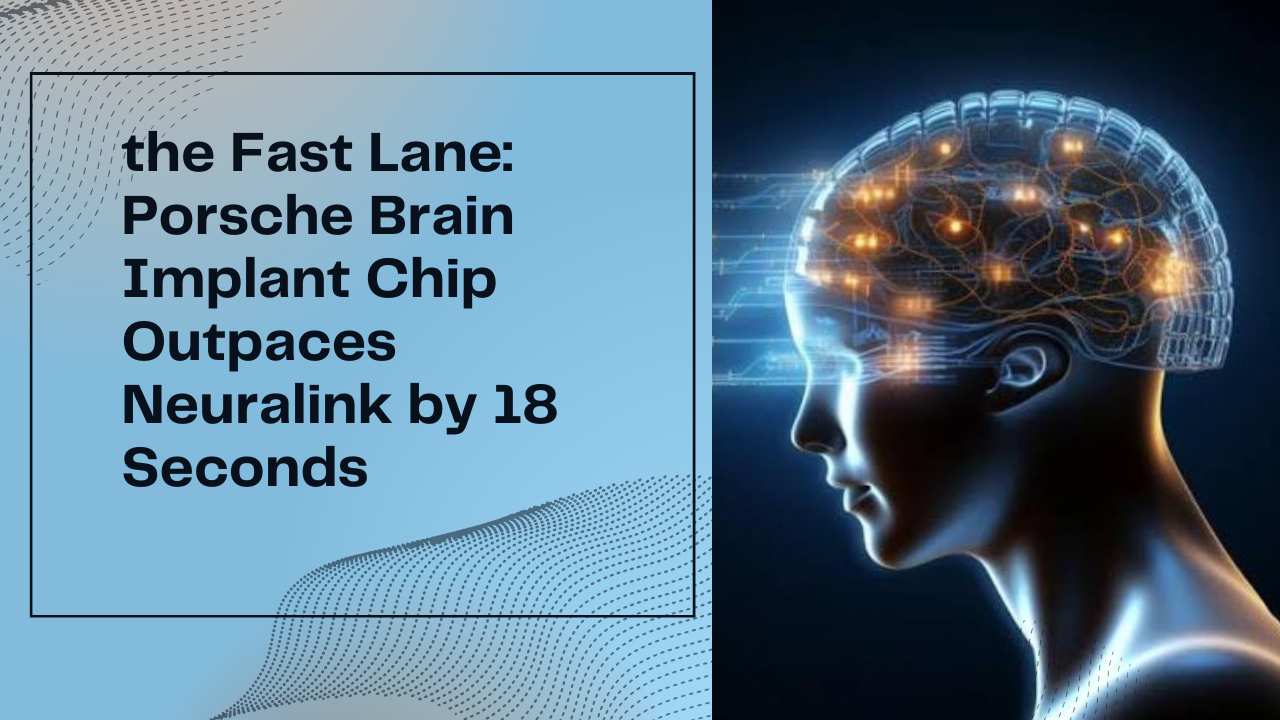In the fast-paced world of neural technology, a new player has entered the arena, promising groundbreaking advancements. The Porsche Brain Implant Chip, touted as 18 seconds faster than Neuralink, is turning heads and sparking discussions about the future of neural interfaces. Let’s delve into the details of this technological race and its potential implications.
The Need for Speed in Neural Interfaces
Accelerating Cognitive Connectivity
The pursuit of faster neural interfaces stems from the desire to accelerate cognitive connectivity between the human brain and external devices. As technology inches closer to seamless integration with our neural processes, every fraction of a second becomes crucial in enhancing the efficiency and responsiveness of these interfaces.
The Porsche Brain Implant Chip: A Technological Marvel
Unveiling the Speed Demon
Porsche, renowned for its speed on the roads, has ventured into the neural technology domain with a chip that claims to be 18 seconds faster than Neuralink’s current offerings. This revelation has sparked excitement among tech enthusiasts and researchers alike, as the chip promises to set a new standard for speed and precision in neural interfaces.
Cutting-Edge Neural Processing
The key to the Porsche Brain Implant Chip’s speed lies in its cutting-edge neural processing capabilities. Leveraging advanced algorithms and neural network architectures, the chip optimizes the communication between the brain and external devices, achieving a remarkable reduction in response time. This breakthrough opens avenues for more seamless interactions between humans and technology.
A Comparative Analysis: Porsche vs. Neuralink
The Neuralink Legacy
Neuralink, founded by Elon Musk, has been at the forefront of neural interface development. Their innovative technologies aim to bridge the gap between humans and machines, with a focus on enhancing cognitive abilities and addressing neurological conditions. While Neuralink has made significant strides, the emergence of the Porsche Brain Implant Chip introduces healthy competition, pushing the boundaries of what neural interfaces can achieve.
Speed as a Differentiator
The 18-second advantage claimed by the Porsche Brain Implant Chip introduces a new dimension to the competition. In a world where milliseconds matter, this speed differential could have profound implications for real-time applications, such as neuroprosthetics, virtual reality, and brain-machine interfaces.
Potential Applications and Implications
Revolutionizing Neuroprosthetics
The speed advantage of the Porsche Brain Implant Chip holds great promise for neuroprosthetics, where precise and instantaneous communication between the brain and prosthetic devices is paramount. This technology could redefine the capabilities of artificial limbs, providing users with a more natural and responsive experience.
Transforming Virtual Reality
In the realm of virtual reality, the Porsche Brain Implant Chip’s speed could elevate the immersive experience to new heights. Reduced latency and faster response times could eliminate the dissonance between virtual and real-world interactions, making virtual reality environments more convincing and enjoyable.
Ethical Considerations and Future Outlook
Navigating the Ethical Landscape
As with any technological advancement, the introduction of the Porsche Brain Implant Chip raises ethical considerations. Questions about privacy, security, and the potential misuse of neural interfaces will undoubtedly shape the discourse surrounding this technology. Responsible development and deployment will be crucial to address these concerns.
The Road Ahead
The competition between the Porsche Brain Implant Chip and Neuralink marks a significant chapter in the evolution of neural interfaces. As both entities continue to innovate and refine their technologies, we can anticipate a future where neural interfaces seamlessly integrate with our daily lives, offering unprecedented possibilities for human-machine collaboration.
Conclusion
The Porsche Brain Implant Chip’s claim of being 18 seconds faster than Neuralink signifies a thrilling chapter in the development of neural interfaces. As these technologies race toward the future, the implications for neuroprosthetics, virtual reality, and beyond are profound. The journey ahead promises to be a fascinating exploration of how technology can reshape the connection between the human brain and the digital realm.










